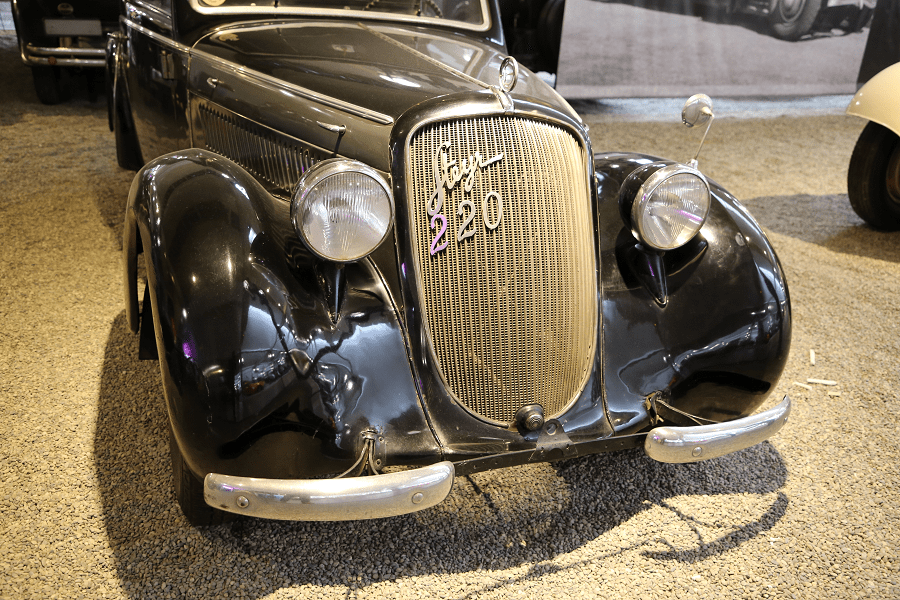Steyr Cabriolet Type 220 from 1938 (Austria), six cylinders, 2260 cc, 55 HP, 120 km/h
The Steyr 120 Super, Steyr 125 Super and Steyr 220 were a series of medium-sized cars built by the Austrian firm Steyr-Daimler-Puch from 1935 to 1941. The moderately streamlined body was designed by technical director Karl Jenschke (1899-1969) and was manufactured by Gläser-Karosserie GmbH in Dresden. The design had a close resemblance to the smaller Steyr 100.
n 1937 the unaltered body was refitted with a still bigger engine and was named Steyr 220. It was available in four body styles (five-passenger limousine, five-passenger cabriolet, and two cabriolet versions with bodies by Gläser Coachworks of Dresden, Germany). All models received inline six-cylinder engine and mated to a four-speed manual. The bore was increased to 73 mm (2.9 in), resulting in an output of 55 PS (40 kW) and a displacement of 2260 cc, or 2.3 litres. Given the car’s lightweight and rigid chassis with four-wheel independent suspension, its performance and handling would have been exceptional for the day. This popular model remained in production until 1941 with 5900 units built.
During the Second World War this model, especially in a cabriolet version was designed primarily for Nazi Germany’s high rank commanders and officers. A Steyr 220, with the more powerful 2.3 litre engine was the car used in an escape from Auschwitz concentration camp on 20 June 1942. The car was owned by the camp commandant Rudolf Höss and was taken by the escapees (Kazimierz Piechowski, Stanisław Gustaw Jaster, Józef Lempart and Eugeniusz Bendera), who were dressed in SS uniforms and armed accordingly, and driven straight out of the main gates of the camp. The 4 escapees were never recaptured.












